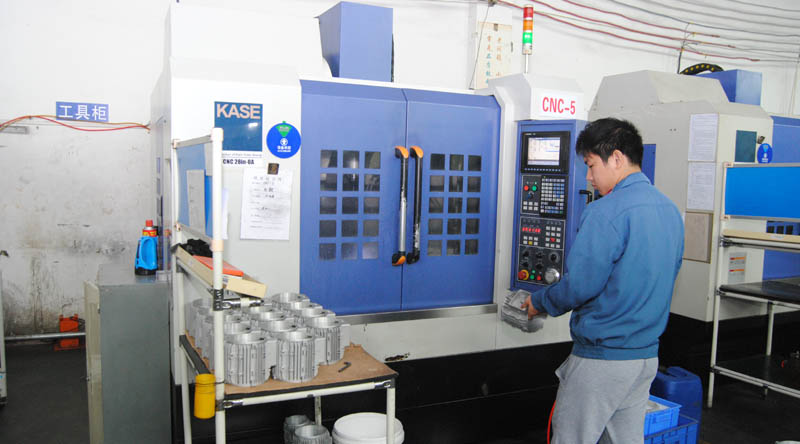The following points should be specially paid attention in the use of aluminum alloy die casting mould

1. The use of mould cooling system. Correctly use of mould cooling water
can not only extend the service life of the mould, but also improve the
production efficiency. In the actual production we often ignore its importance,
the operator also graphs save trouble, because of connecting is too much
trouble, the operator does not pick up the cooling water pipe, in order to save
costs, some companies even do not use cooling water when mould customisation, which
resulting in the serious consequences.
Mould materials are generally made by specialised die steels through a
variety of processes, even better die casting mould steels also have their limitation of use,
such as temperature. If the mould temperature is too high when using, it is easy
to make the surface of the mould core early cracked, some moulds have a large
area of crack less than 2000 times of using.
Even the mould core has changed colour during production because the mould
temperature is too high, after measuring it has reached more than 400 degrees,
such temperature is prone to crack when meet mould release cooling state, the
products are easy to deform, strain and stick the mould. The mould cooling water
can greatly reduce the use of mould release, and it is unnecessary to use mould
release to reduce the mould temperature.
Its advantage is to extend the life of the mould, save the die casting mould cycle, improve product quality, reduce the incidence of mould sticking and
aluminum sticking, reduce the use of mould release. It can also reduce the loss
of top rod and core caused by the hot mould temperature.
2.
The mould must be preheated before the production process, in order to prevent
the crack because the cold die suddenly encountered hot metallic liquid, the
more complex moulds can use blowtorch, liquefied gas, or mould temperature
machine for good condition, the relatively simple moulds can use slow injection
preheating.
3.
If mould is equipped with a neutron control, please pay attention to the
absolute prohibition of signal line connector between die casting mould machine and
mould, the reason is clear, in daily production, it is difficult to avoid signal
line be wet, or the joint bandage is easily broken, resulting in short circuit
of machine tools, if the cause of the error signal, it will alarm and automatically
shut down for delaying time, the worse result is disturbance signal, the mould is
damaged. It will cause unnecessary loss. Travel switch should pay attention of
waterproof.
High Pressure Die Casting Mould Provide Superior Repeatability
The die casting mould contains the mold cavity, i.e. the space which forms the contours and dimensions of the casting. The liquid die casting alloy is fed in via channels which is called the gating system.
A die casting mould is essentially made of two parts and consists of the fixed (stationary) and the movable (ejector) mold halves. The stationary die half is mounted on the die casting machine’s fixed fixing plate; the ejector die half is fixed to the movable fixing plate and contains the casting ejector. When ready for casting, the two mold halves are closed and are kept closed on the machine by the die locking force. The contact surface between the two mold halves is called the mold parting or mold parting plane. The opening and closing movements are only applied to the ejector die half. Cavities or undercuts are demolded by mechanically or hydraulically operated core slides (cores).
Die casting mould from Nice Rapid utilize aluminum alloys and zinc alloys to produce small to large run part identical castings for your manufacturing needs. Die casting mould development is a versatile process that enables the production of a large quantity of small to medium-size castings.
Die Casting Mould Manufacturing Processes
Die casting is a manufacturing process that is commonly used for producing accurately dimensioned, sharply defined, smooth, or textured surface metal parts. It is accomplished by forcing molten metal under high pressure into reusable metal dies. The die casting mould process follows the subsequent procedures regarding die cast mold manufacturing:
-A mold is created in at least two sections to allow the proper removal of the casting.
-The sections are mounted securely within the machine and are arranged so that one is stationary while the other is moveable.
-The two are tightly clamped together.
-Molten metal is injected into the die cavity where it quickly solidifies.
-The die halves are drawn apart and the casting is ejected.
When compared with sand or permanent mold processes, HPDC (High Pressure Die Casting) is the fastest method in the industry for producing highly precise non-ferrous metal parts.
Contact us for more information regarding die casting mould manufacturing processes or call us at +86 760 8996 2989 and we will be happy to assist you with any questions that you may have regarding die casting mould and numerous die casting mould processes.







